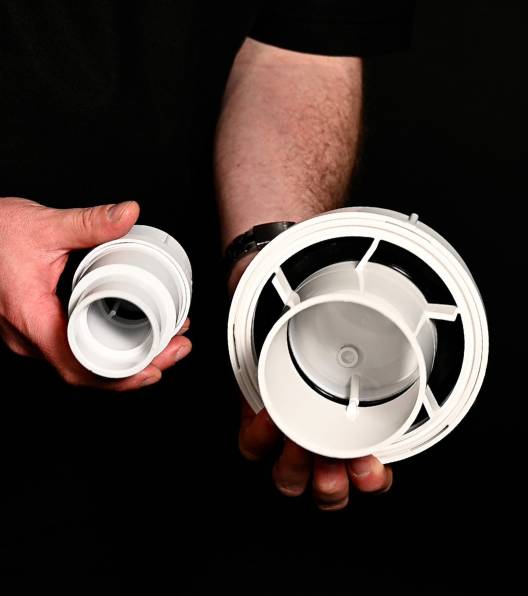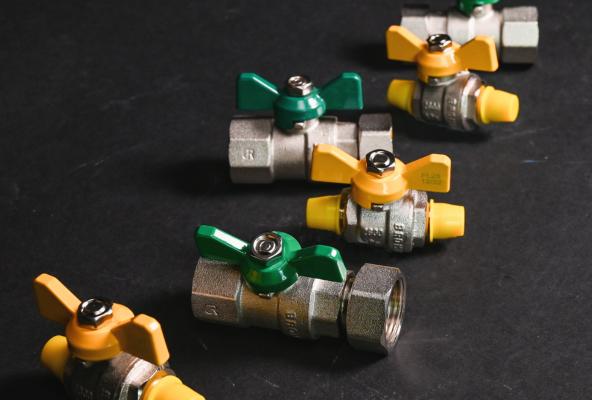Designed to control the flow of gas and water and provide air admittance.
Push-fit pipes are quick and easy to install and can be easily separated. Solvent-weld pipes use solvent cement to make a strong joint, making them suitable for permanent fixtures.
Push-fit connections connect with push-fit pipes and solvent-cement connections connect with solvent-weld pipes. Some valves come with a removable adaptor that allows it to fit either connection, for example on the Bromic Air Admittance Valve 110mm.
To choose the right air admittance valve, you'll need to know the fixture unit of the pipe and the airflow capacity required. Read more
| Properties | Air Admittance Valve 110mm (SKU: 1210702) | Air Admittance Valve with Adaptor for 32-40-50mm (SKU: 1210701) |
|---|---|---|
| Recommended Application | Discharge stacks up to 45 metres or 10 storeys high | 32mm and 40mm for use as a connection to waste pipes to prevent water loss from trap seals. 50mm is for use on branch discharge pipes |
| Connection | 110mm push-fit connection 82mm solvent cement connection | 32mm, 40mm and 50mm solvent cement connection |
| Airflow Capacity | 108.32l/s | 10.1l/s |
| Maximum Unit Loading | Pipes – 19,799 fixture units Stacks – 1230 fixture units | Pipes - 172 fixture units Stacks – 10 fixture units |
| Temperature Range | -20°C to +60°C | -20°C to +60°C |
Both ball valves and butterfly valves are valves that are used to control the flow of water or gas in a pipe system. Internally, butterfly valves consist of a thin disk and ball valves consist of a sphere-like disc that rotates as the handle is turned.
Whilst butterfly valves are usually recommended for use with larger pipe diameters, ball valves provide a tighter seal and are hence suitable for high-temperature and pressure services. Bromic supplies a wide range of ball valves with different thread connections and lever types for gas and water applications.
Please note: Butterfly valves should not be confused with butterfly handles (also known as T handles).
The colour of the handles on Bromic ball valves are used to distinguish their usage between gas and water.
Valves with a yellow handle are gas valves and are AGA-approved for use with Natural Gas and LPG.
Valves with a green handle are water valves and are WaterMark-approved for use with potable water. Almost all of Bromic's green handle valves are also AGA-approved for use with gas, with exceptions such as 1210437.
Refer to product information to review if a valve is compatible with gas and/or water pipelines.


Our brass valves are designed to suit a range of thread configurations, handle types and uses including ball valves, butterfly valves and cylinder valves. Designed for gas and water systems, our ball valves are AGA-approved and/or WaterMark-approved based on application.
View more categories